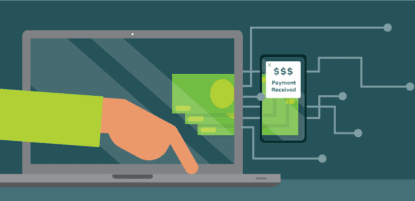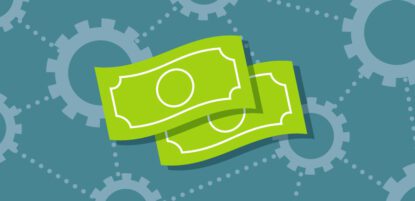Businesses across the globe are turning to digitization to scale operations and ensure business continuity. This is especially true in the accounts payable department, where digitized and automated processes can result in increased efficiency, reduced costs, and strengthened supplier relationships. This article takes a look at four accounts payable statistics that highlight the AP department’s need for streamlined, automated processes across industries.
4 Accounts Payable Statistics that Make the Case for AP Automation
Tracking and monitoring accounts payable metrics is a great way to both determine the current health of your AP processes and to assess the net benefits of making changes to those processes. Here we outline four AP statistics, related to core metrics and KPIs, that underscore the value of increased digitization and automation of AP processes.
1. Percentage of paper invoices and payments
MineralTree’s 2021 State of AP report indicates that 45% of businesses still make more than half of their supplier payments via check.
When you consider the extra cost, handling time, and potential for error that comes with paper invoices and checks, it’s clear that many companies may see benefit by reducing their percent of paper invoices and payments.
Luckily, the prominence of digital payments is growing. In fact, 64% of organizations intend to make more electronic payments in the coming year. However, many businesses (51%) are worried that suppliers may not accept e-payments, 31% are concerned about team capacity to contact or enroll vendors, and 22% are uneasy about increased fraud risk. These organizations should rest assured that AP automation platforms provide one workflow with built-in security controls for all payments, enabling easy processing, vendor onboarding, and fraud protection.
2. Average days payable outstanding
IOFM’s Fall 2020 Measuring Your AP Performance: Efficiency Benchmarks report shares some interesting statistics about paying purchase order (PO) invoices on time. For companies with low invoice volume, 33% paid on time when using automated systems versus the 24% that paid on time without automation. The same pattern held in businesses with moderate invoice volume: 42% of PO invoices were paid on time when automated, and 25% were when not automated.
You can choose to measure your AP department’s on-time payment performance by considering the percent of POs paid on time, but a more common KPI is the average days payable outstanding (DPO). The formula for DPO is:
DPO = (Accounts Payable X Number of Days)Cost of Goods Sold
This gives a measure of how many days it typically takes your company to make payments after services are rendered and is a good indication of whether you are paying suppliers on time or not. If your business is having trouble paying invoices on time, it may be worth investigating AP automation solutions to speed up invoice and payment processing.
3. Cost per invoice
In their 2021 World Class AP Performance: Efficiency Benchmarking Metrics report, IOFM broke down companies by process maturity and level of automation and then compared their average cost per invoice. Across three process maturity levels, those organizations with no AP automation paid the most per invoice.
The companies with the lowest process maturity level paid $6.20 per invoice without automation, and those with the greatest process maturity level paid $1.83 per invoice without automation.
With limited automation (only having 1-2 steps of the AP process automated), those numbers dropped to $2.81 and $1.64, respectively. Companies with end-to-end AP automation and the highest level of process maturity paid only $1.45 per invoice. Those companies with end-to-end AP automation, but low process maturity actually ended up paying slightly more – $3.03 – likely due to problems resulting from this lack of maturity. Clearly, there is a major cost value of implementing automation and improving AP processes.
Cost per invoice is a great KPI to track because it directly shows what sort of cost savings are realized when automation is introduced. And if your cost per invoice doesn’t go down when your use of automation goes up, this might be a sign that you need to look for inefficiencies in your internal processes.
4. Potential benefits from switching to AP automation
IOFM’s 2021 World Class AP Performance: Effectiveness Benchmarking Metrics report also indicated that more than three-quarters (77%) of all AP departments have at least some form of automation. MineralTree’s State of AP report went one step further and reported that, across all industries, just 9% have automated their AP process end-to-end.
Not only does it seem like common sense that moving to end-to-end AP automation will result in savings and other benefits, the statistics support this notion as well. MineralTree’s report found that 64% of companies who have implemented AP automation are processing more invoices with the same size team, 23% are processing the same invoice volume with fewer resources, and 13% have been able to reallocate staff time to other projects.
Example: AP Automation in Healthcare
Let’s take for example, the healthcare industry. In respect to invoice volume, Levvel suggests that, within the healthcare industry, 36% of invoices received from suppliers are paper, 35% are email, 15% are EDI/XML, and 15% come through a web upload or supplier portal.
When it comes to automation, Levvel indicated that 36% of healthcare organizations used a workflow tool as part of their accounting software, 27% didn’t use one at all, 21% had a homegrown invoice workflow solution, and 15% used a cloud-based invoice workflow automation software. Of healthcare organizations, 36% indicated that lack of budget was a top AP automation barrier, 21% indicated that their current processes work, 13% indicated a lack of understanding of current available solutions, and 12% had no executive sponsorship.
When healthcare organizations that switched to automation were asked to share the greatest improvements that they’ve seen, 35% said it was reduction in paper invoice volume, 33% said quicker approval of invoices, 21% said improved visibility into unpaid invoices, 19% said increased employee productivity, 16% said lower overall AP processing costs, and 7% indicated a reduction in late payment penalties and interest.
These statistics alone make it easy to conclude that companies, even those outside of the healthcare space, see an overall savings in cost and time as well as improvements in a variety of KPIs when they improve their process maturity and move toward end-to-end AP automation.
Top Barriers to AP Automation
Across industries, barriers to AP automation include both inertia and lack of understanding of the potential benefits. In MineralTree’s 2021 report, respondents who hadn’t yet automated their AP process indicated that a top barrier was their belief that current processes are working (32%), this was followed by lack of budget (18%), and lack of clear business case/ROI (16%). What these businesses may not realize is that the true value of automation tips in their favor, especially when considering things like efficiency gains, cost savings, and rebates from virtual card payments.
Accounts Payable is rated the highest among companies for their top finance digitization and automation priorities. This suggests that many companies are starting to understand the potential benefits of embracing more automated processes.
If you’d like to see what your ROI might be as a result of digitization, try out MineralTree’s ROI calculator. MineralTree has AP automation solutions for those in the healthcare industry and beyond.




